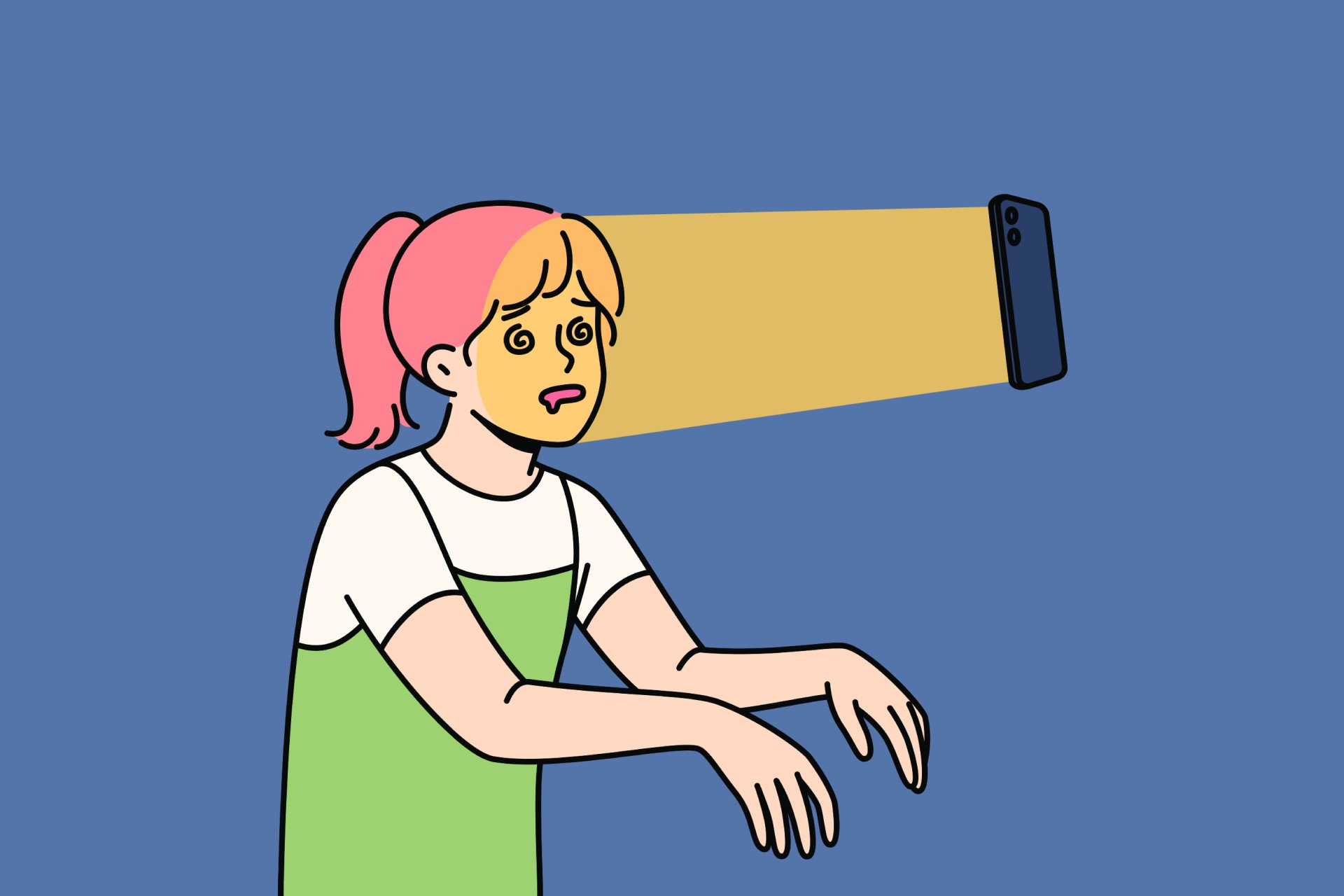Is the fear over adolescents’ screen time justified?
New research suggests the link to depression and anxiety is more complicated than a simple cause-and-effect.

Key Points
- Weak Long-Term Link: The study found a strong immediate (cross-sectional) correlation between high screen time and increased depression/anxiety in teens, but this link became very weak or non-existent 12 months later.
- Correlation, Not Causation: These findings suggest that high screen time is unlikely to be a direct cause of depression and anxiety. The relationship is likely bidirectional – meaning poor mental health might also lead to increased screen use.
- Gender Differences: While females showed a stronger cross-sectional link between screen time and depression compared to males, this difference was not found in the long-term, nor was it present for anxiety.
- Social Media Use Not a Strong Factor: Maladaptive social media use (such as making negative social comparisons) did not strongly influence the long-term relationship between overall screen time and mental health symptoms.
The Vicious Cycle That Isn’t So Vicious
Picture a typical teenage evening: curled up on the couch, illuminated by the glow of a phone, doom-scrolling through social media instead of hitting the gym or sleeping.
We’ve been told this high screen time is fueling a mental health crisis.
Parents worry. Scientists debate.
But what if the smartphone isn’t the primary villain?
What if the troubled teen is reaching for the screen, rather than the screen creating the trouble?
A new longitudinal study following over 4,000 Australian adolescents for one year has provided crucial perspective on this ongoing conversation.
The research moved beyond a single snapshot in time to track real changes, offering a more robust view of the relationship between screen time, depression, and anxiety.
An Instant Snapshot vs. The Long Story
When researchers looked at the data all at once – a cross-sectional view – the results were dramatic, confirming common fears.
For every extra hour of screen time adolescents reported, their measures of:
- Depression increased by 1.25 points.
- Anxiety increased by 0.79 points.
In clinical terms, a teenager reporting five or more hours of screen time per day could see their depression score jump by over 6 points compared to a peer with one hour.
This instant connection is why the public health debate is so charged.
However, when the team looked at the longitudinal data (how much Time 1 screen time predicted symptoms 12 months later) the dramatic effects virtually disappeared.
For depression, the effect was “markedly weaker,” translating to only a small increase of about 0.15 points on the depression scale for each additional hour of screen time at baseline.
For anxiety, the association vanished completely, showing no significant link 12 months later.
The Bidirectional Hypothesis
The key takeaway is that the “dose-response” fear – the idea that more screen time automatically causes more mental illness – is not supported by the long-term evidence.
Instead, the study suggests a bidirectional relationship.
Think of it like a coping mechanism.
When adolescents feel depressed or anxious, they may withdraw socially or struggle with sleep.
In this state, they might turn to digital devices to distract themselves or regulate negative emotions.
The distress drives the screen use, rather than the screen use creating the distress.
The Nuance of Social Media and Gender
Many have speculated that the type of screen use – specifically maladaptive social media use (SMU), characterized by negative social comparisons – is the core problem.
Surprisingly, the study found that high maladaptive SMU did not strongly influence the overall screen time-symptom relationship.
While maladaptive SMU was weakly associated with worse depression at the beginning of the study, it was not associated with depression 12 months later or with anxiety at either time point.
This suggests that “maladaptive use” as currently defined may not fully capture the complexity of how teens engage with evolving digital platforms.
Gender was also a mixed bag. While females showed a stronger cross-sectional link between screen time and depression than males, this difference was not sustained over the 12-month period.
Why It Matters: Reframing the Conversation
These findings are a major signal for parents, educators, and clinicians. Instead of policing a screen time “cut-off” in the belief it will cure mental illness, the focus should shift.
For everyday readers and parents, the study offers a powerful reframing:
- High screen time is likely a symptom, not a cause, of distress. If your child is constantly on a screen, the goal should be to understand the underlying emotional need driving that behavior. Are they seeking distraction? Escaping a stressful situation? The screen is a clue, not the full diagnosis.
- The path forward requires nuance. Future research is moving toward identifying specific digital behaviors (like “doom scrolling”) that are genuinely harmful, rather than broadly condemning all time spent on devices.
For clinicians, this supports an approach that focuses on the quality of digital engagement.
It suggests that intervention strategies should prioritize treating the depression and anxiety first, rather than mandating a reduction in overall screen time that may be perceived by the adolescent as an attack on their coping strategy.
Reference
Li, S. H., Batterham, P. J., Whitton, A. E., Maston, K., Khan, A., Christensen, H., & Werner-Seidler, A. (2025). Cross-sectional and longitudinal associations of screen time with adolescent depression and anxiety. British Journal of Clinical Psychology, 64, 873–887. https://doi.org/10.1111/bjc.12547


